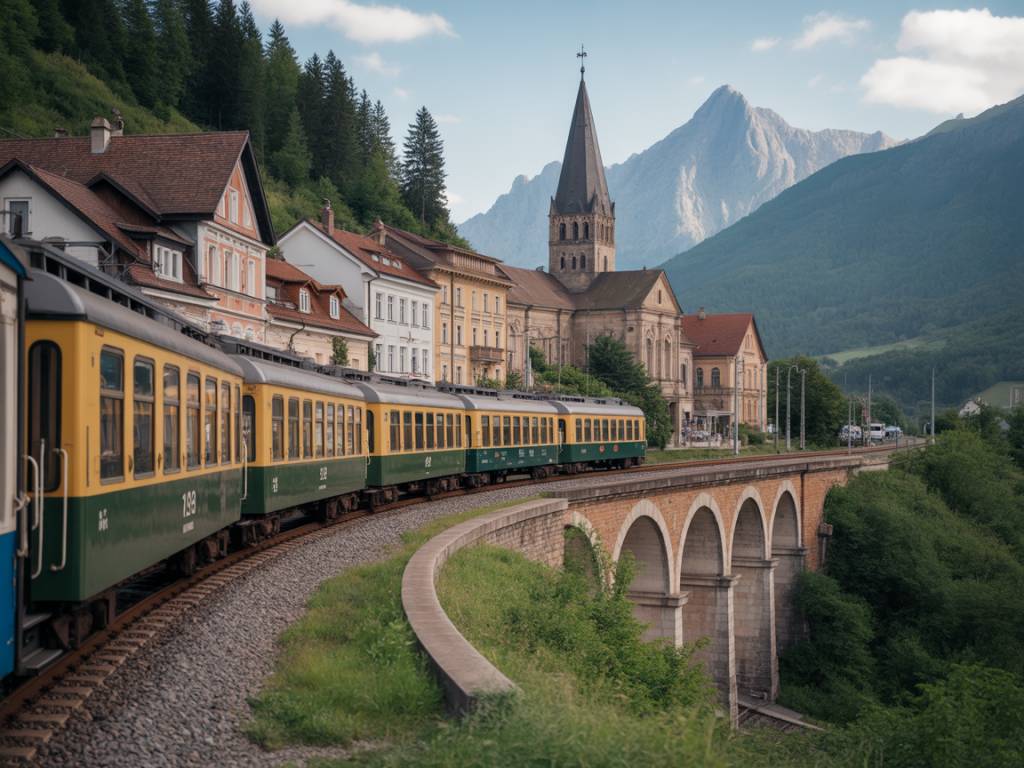Embarking on a Central European Rail Adventure
Imagine traversing rolling hills, dense forests, and tranquil lakes, all without leaving the comfort of your train seat. A rail journey through Central Europe offers a captivating dive into the continent’s most charming and often overlooked villages. From cobbled streets lined with pastel-colored houses to centuries-old traditions preserved in quiet mountain towns, this type of travel reveals a Europe of authenticity and timeless beauty.
I recently embarked on such a railway road trip—starting in the Czech Republic and weaving my way through Slovakia, Hungary, and Austria—discovering not just destinations but entire ways of life. The rail network in this part of the world is not only reliable and affordable, but also incredibly scenic and often underestimated in the world of European travel planning.
Cesky Krumlov, Czech Republic: A Fairytale Begins
Located in South Bohemia, Český Krumlov is arguably one of the prettiest villages in all of Europe. The train from Prague takes about three hours, winding through sleepy hamlets and lush countryside, setting the tone for what’s to come. As the train pulls into the station, a short walk brings you into the medieval center—a UNESCO World Heritage Site since 1992.
The town is dominated by the impressive Český Krumlov Castle, perched atop a hill with panoramic views of the Vltava River snaking below. The old town’s narrow lanes reveal hidden teahouses, Baroque facades, and artisan shops. Evenings here are magical, with the soft glow of lanterns reflecting off the river and the hum of live jazz drifting from wine bars tucked beneath ancient arches.
Slovakian Serenity in Banská Štiavnica
Border crossing by train to Slovakia is seamless, a testament to the Schengen Agreement. From Brno to Banská Štiavnica takes a bit of patience—several transfers and a last leg on a charming regional train from Zvolen—but the journey is worth every switch.
Banská Štiavnica is a hidden gem, nestled in an old volcanic caldera. Once a thriving silver mining town, it’s now a center of heritage and quiet, reflective beauty. The Old Castle and New Castle dominate the skyline, while the Holy Trinity Square below hosts coffee shops and local boutiques. The surrounding Štiavnica Hills are ripe for hiking, and in autumn, the foliage transforms the landscape into a painter’s palette of reds and golds.
Hungarian Traditions in Hollókő
Traveling from Slovakia to Hungary introduces another layer of Central European culture. After a train ride into Budapest, a regional connection heads north to Hollókő, a traditional Palóc village retained almost exactly as it stood in the 17th century.
This UNESCO-listed village is more than a museum piece—it’s a living community that still celebrates its customs. During Easter week, you can witness the water-splashing tradition where men douse women with buckets of water in an old fertility rite. The preserved thatched-roof cottages, open-air museum, and Hollókő Castle—perched on a hill above the town—make this a unique detour from Hungary’s well-trodden paths.
Rustic Romance in Austria’s Hallstatt
The train journey from Budapest to Hallstatt, Austria, via Vienna or Linz, is long but seamlessly interconnected. As the train glides through the Salzkammergut region, steep alpine peaks contrast with serene lakes—this is Austria at its most photogenic.
Hallstatt has gained fame on Instagram, but its popularity doesn’t diminish its surreal beauty. Arriving by train means a short ferry ride across the lake, offering the most dramatic first impression imaginable. The village, wedged between mountain and water, is home to pastel-colored chalets, a centuries-old salt mine, and the eerie but fascinating Charnel House, filled with painted skulls documenting local genealogies.
To escape the day-tripper crowds, I recommend staying a night or two. The village transforms after 5 PM, when the buses leave and the church bells echo across the slate rooftops in near silence. Early morning reflections on the lake are among the most serene I’ve ever experienced during my travels.
Why Train Travel Enhances the Experience
One of the greatest joys of traveling through Central Europe by rail is the opportunity to witness the landscape gradually change. Fields turn into forests, hills into mountains, and languages shift gently from Slavic tongues to Germanic lilt. Trains here are unexpectedly modern—most are equipped with Wi-Fi, power outlets, and quiet cabins for uninterrupted reading time or reflection.
Moreover, train stations in villages like these are often within walking distance of the town centers, unlike airports situated on the outskirts. This makes spontaneous exploration much more feasible. There’s something uncommonly romantic about stepping off a train and strolling directly into a medieval square with no need for taxis or navigation app anxiety.
Tips for Planning Your Rail Getaway
- Invest in a Eurail Global Pass: It provides flexibility across most countries in Central Europe, allowing you to hop on regional trains without extra booking fees.
- Use a combination of InterCity and regional trains: While high-speed trains connect the major cities (like Prague to Budapest), regional trains serve the more remote villages.
- Travel light: Cobblestone streets and guesthouses without elevators are common in these villages, so a backpack or light rolling suitcase makes sense.
- Book accommodations early in smaller towns: Places like Hallstatt and Český Krumlov have limited lodging, especially in peak season (May through September).
- Download offline translation and railway apps: Languages and rail schedules can vary, and not all ticket machines are easy to navigate.
Experiencing the Soul of Europe
Central Europe’s villages speak to a quieter, more authentic side of continental travel. Here, stories unfold in market squares, not museums; in local bakeries, not global chains. Rail travel allows for a slower, more contemplative rhythm, revealing that the real joy of discovering Europe often lies not in bucket-list landmarks, but in the spaces between them.
Whether you’re savoring a cinnamon-sprinkled trdelník in Český Krumlov, listening to church bells echo through the Štiavnica hills, or watching fog rise above Lake Hallstatt, these moments linger long after the journey ends.
